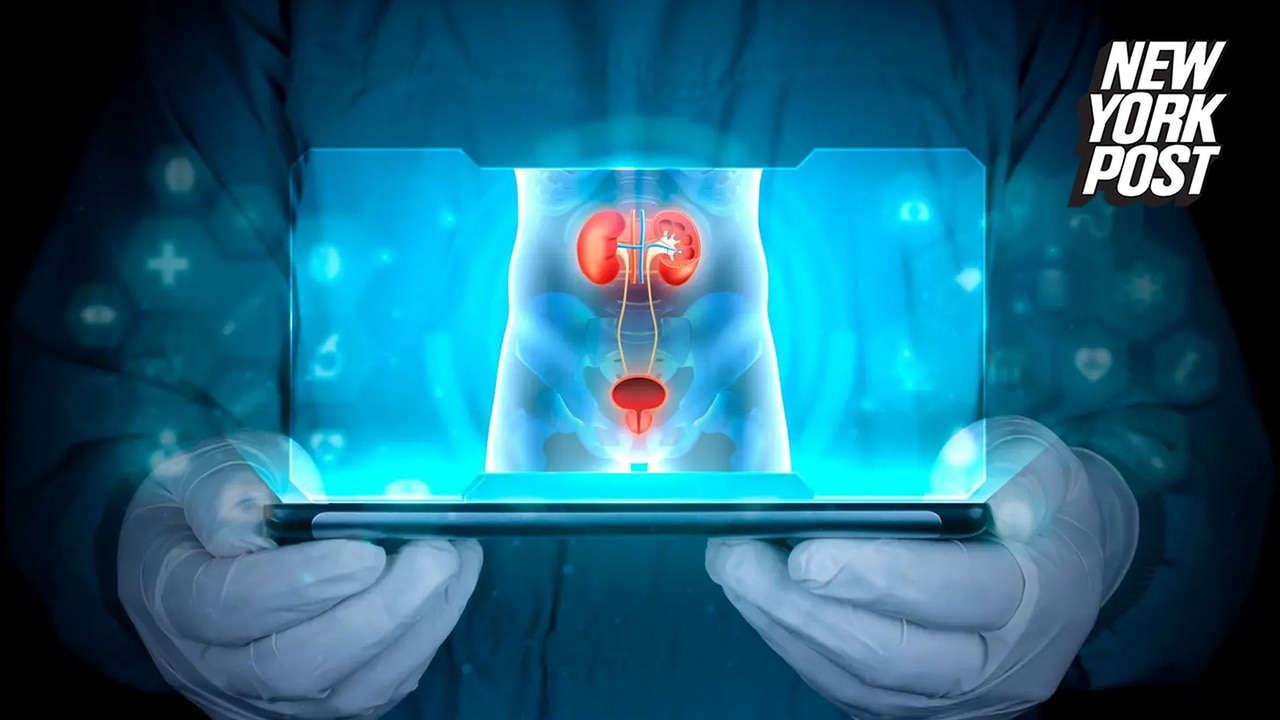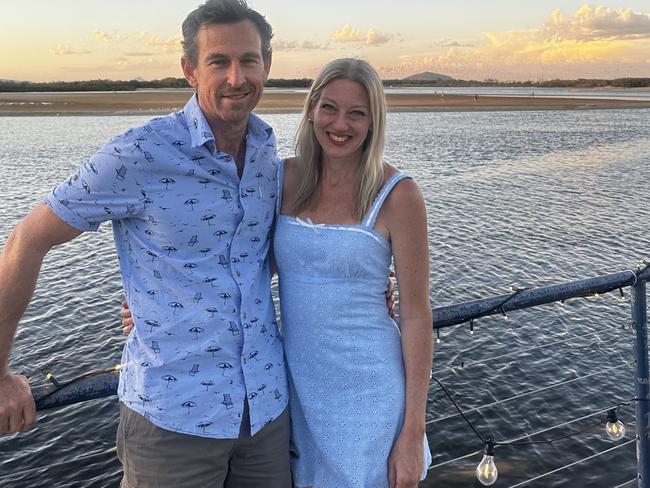Ann Wason Moore: The day my husband Michael learned he had prostate cancer – and what happened next
It was a call you hope never to get, and it came just days before my husband’s 50th birthday. It was bad news – and it’s a lesson for all men, writes Ann Wason Moore.

Gold Coast
Don't miss out on the headlines from Gold Coast. Followed categories will be added to My News.
The call came on Friday the 13th.
Maybe that date should have been warning enough, but my husband and I were simply relieved to hear the news before the weekend, when we would celebrate his 50th birthday.
But all those party plans came crashing down as the doctor delivered the diagnosis: Michael had prostate cancer.
Neither of us cried, we were simply in shock. Besides, as bad as this news was, it came wrapped in a silver lining.
He would need major surgery but no further treatment was expected, and because it had been detected so early, that surgery would spare nerves, meaning minimal impact on his life post-recovery.
His surgery was in January and it all went as well as we could have wished, but it was still rough. However, the best news was that his margins were clear and subsequent tests have shown all is well so far. His recovery has been incredible, but the impacts, though minimal, are a reminder of his close call.
And not a day goes by that he doesn’t think about it.
There are days when the glass is half empty: How did he – someone who eats well, runs marathons and is a proud MAMIL (Middle aged man in Lycra) – get this diagnosis aged just 49?
But those are outnumbered by the day where the glass is half full: Thank goodness he was so healthy already, a factor on which every doctor has commented as contributing to his successful surgery and recovery. But most importantly, thank goodness that attention to health led to this early detection.

Unlike so many men, Michael has always been diligent in attending regular medical check-ups, getting blood tests and acting on results. So when one of those blood tests showed a very slightly elevated level of PSA (prostate specific antigen), so slight that it was a borderline call whether he should even be referred to a specialist, my husband decided it couldn’t hurt to keep a check on it.
Over two years, his specialist monitored those levels as they ever so slowly climbed, until finally a biopsy was necessary. None of us, including the specialist, thought it would be cancer. After all, both an MRI and full body PET scan showed nothing … but it still needed to be ruled out.
Looking back, there are so many sliding door moments … what if the GP didn’t include PSA on his blood test; what if Michael decided against the specialist; what if the specialist was happy with the negative MRI and PET scans?
And, of course, what if Michael himself wasn’t so proactive?
What astounds me after all of this is the fact that proactive national clinical guidelines for the early detection of prostate cancer have only just been suggested.
Just last month, the Prostate Cancer Foundation of Australia released its draft guidelines, the result of two years of research and analysis, which, if adopted, will for the first time recommend baseline testing to all men aged over 40, as well as clinical assessment for men aged over 70.
If adopted, the 2025 Guidelines for the Early Detection of Prostate Cancer will replace the 2016 Clinical Guidelines for PSA Testing, now considered outdated, which followed the dogma that the harms of testing and detection outweighed the benefits of treatment.
That’s right, until these recommendations were released, men were often actively discouraged from testing their PSA, being told that men were more likely to die ‘with’ prostate cancer than ‘from’.
That might be true for men over the age of 75, but for my husband? It would have killed him.
The fact is that without early detection, survival outcomes from prostate cancer are drastically reduced. Which is crazy given that prostate cancer is now the most commonly diagnosed cancer in Australia, with 26,000 men diagnosed each year and the disease killing around 4000 men a year.
I hate to think how many men have been missed along the way.
The good news is that, as well as revising its guidelines, the Prostate Cancer Foundation of Australia has now started campaigning for a national register of prostate-specific antigen test results, modelled on existing programs for the detection of breast or bowel cancer.
But in the meantime, to all men, please go get your PSA tested. It’s literally as simple as a blood test.
Since his diagnosis, Michael has been open about his illness and treatment – although this column is certainly beyond his comfort zone – and it’s amazing how many of his mates have since decided to get checked.
Along with the return of his good health, the silver lining of this shocking diagnosis has been the public service announcement he’s been able to amplify.
So men, please listen to this PSA about PSA and go get checked.
Originally published as Ann Wason Moore: The day my husband Michael learned he had prostate cancer – and what happened next




